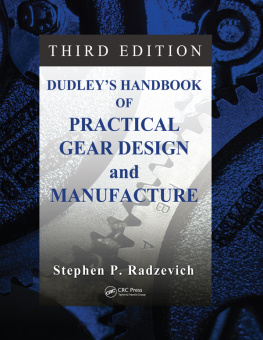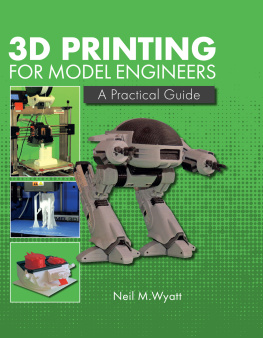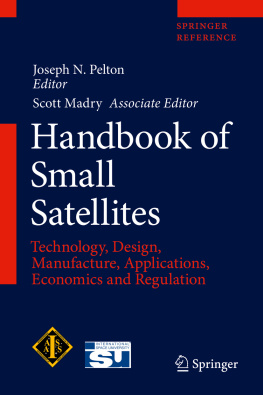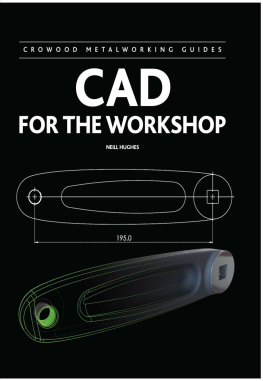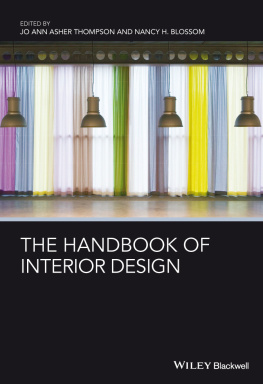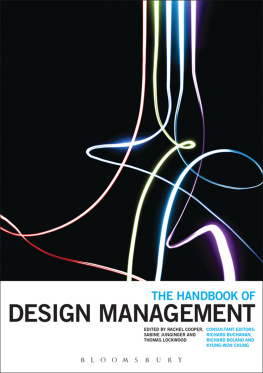Radzevich - Dudley’s Handbook of Practical Gear Design and Manufacture
Here you can read online Radzevich - Dudley’s Handbook of Practical Gear Design and Manufacture full text of the book (entire story) in english for free. Download pdf and epub, get meaning, cover and reviews about this ebook. year: 2016, publisher: CRC Press, genre: Romance novel. Description of the work, (preface) as well as reviews are available. Best literature library LitArk.com created for fans of good reading and offers a wide selection of genres:
Romance novel
Science fiction
Adventure
Detective
Science
History
Home and family
Prose
Art
Politics
Computer
Non-fiction
Religion
Business
Children
Humor
Choose a favorite category and find really read worthwhile books. Enjoy immersion in the world of imagination, feel the emotions of the characters or learn something new for yourself, make an fascinating discovery.
- Book:Dudley’s Handbook of Practical Gear Design and Manufacture
- Author:
- Publisher:CRC Press
- Genre:
- Year:2016
- Rating:5 / 5
- Favourites:Add to favourites
- Your mark:
- 100
- 1
- 2
- 3
- 4
- 5
Dudley’s Handbook of Practical Gear Design and Manufacture: summary, description and annotation
We offer to read an annotation, description, summary or preface (depends on what the author of the book "Dudley’s Handbook of Practical Gear Design and Manufacture" wrote himself). If you haven't found the necessary information about the book — write in the comments, we will try to find it.
Radzevich: author's other books
Who wrote Dudley’s Handbook of Practical Gear Design and Manufacture? Find out the surname, the name of the author of the book and a list of all author's works by series.
Dudley’s Handbook of Practical Gear Design and Manufacture — read online for free the complete book (whole text) full work
Below is the text of the book, divided by pages. System saving the place of the last page read, allows you to conveniently read the book "Dudley’s Handbook of Practical Gear Design and Manufacture" online for free, without having to search again every time where you left off. Put a bookmark, and you can go to the page where you finished reading at any time.
Font size:
Interval:
Bookmark:
The writing of a technical book covering a whole field of work is a very sizable project. The author is faced not only with organizing and writing the text material and equations but also with computing data, preparing tables and figures, and locating good reference data for a multiplicity of items.
I wish to wholeheartedly thank all of the people who have helped prepare this work.
The initial typing and equation work was done by Mrs. M. Irene Galarneau (a long-time secretary of mine), Mrs. Violet Daughters, and Mrs. Dorothy Dudley (my wife). The final typing, proofreading, and preparation of illustrations was done by Mrs. Carolyn Strickland (a technical assistant).
Many of the illustrations in the book have been furnished by companies that have also helped me get items of technical data. (Note the company names given in the figure legends.) The assistance of all of these companies is greatly appreciated.
The American Gear Manufacturers Association (AGMA) has been most helpful to me. The officers and staff are dedicated to the advancement of gear technology and have long provided forums for the decision and evaluation of gear experience. The great body of standards that have been issued by AGMA is of immense reference value. The reader will note that this book has made much use of AGMA standards.
I wish to particularly acknowledge the assistance of a few individuals with unusual knowledge and experience in the gear trade.
Dr. Hans Winter of the Technical University of Munich in Germany (Technische Universitt Mnchen) has reviewed parts of this book and has helped me obtain data and a better understanding of the many aspects of gear research and gear rating.
Dr. Giovanni Castellani, a gear consultant in Modena, Italy, has helped me in comparing European and American gear rating practices and gear-tooth accuracy limits.
Mr. Eugene Shipley of Mechanical Technology Inc. in Latham, New York, has helped meon the basis of his worldwide experience with gears in servicein many discussions about gear wear and gear failures.
Dr. Daniel Diesburg of the Climax Molybdenum Company in Ann Arbor, Michigan, was most helpful in reviewing data on gear metals and gear heat-treating procedures.
Mr. Dennis Townsend of the NASA Lewis Research Center in Cleveland, Ohio, has done unusual research work and also has brought together many key people in the gear trade under the auspices of ASME international meetings. The international ASME gear meeting in Chicago, Illinois, in 1977 was of much value to me.
Dr. Aizoh Kubo of Kyoto University in Kyoto, Japan, has directly contributed to this book in the section on dynamic loading. Indirectly, he has helped me greatly in getting to know the leading people in gear research in Japan.
While I acknowledge with much thanks the assistance of these and many other experts during this work, I must accept the responsibility for having made the final decisions on the technical content of this book. I have tried to present a fair consensus of opinion and the best gear design guidance from all the somewhat divergent theories and practices in the gear field.
Darle W. Dudley
San Diego, California
The author would like to share the credit for any success of the Gear Handbook to plenty of discussions on the subject with numerous representatives of the gear community both domestic and international.
The contribution of many friends and colleagues in overwhelming numbers cannot be acknowledged individually, and as much as our benefactors have contributed, their kindness and help must go unrecorded.
Special thanks to Jonathan W. Plant, senior editorMechanical, Aerospace, Nuclear & Energy Engineeringfor his idea to revise the 2012 edition of the Gear Handbook, and in this way to make the revised, updated, and enlarged edition available to the gear community all around the globe.
Many thanks also to Jill J. Jurgensen, senior project coordinator, Editorial Project Development, for the comprehensive support during the publication process, as well as to those at CRC Press who took over the final stages and who will have to cope with the marketing and sales of the fruit of my efforts.
My special thanks to my wife Natasha for her tolerance, support, encouragement, endless patience, and love.
The administrative family and members of the American Gear Manufacturers Association are happy and proud to held in bringing this authoritative work by Mr. Darle W. Dudley to your attention.
Even a casual reading discloses that this is a genuine labor of love, coupled with a remarkable knowledge of our industry. A more thorough study will enrich the student, engineer, gear manufacturer, or gear user by giving each an insight into the manner in which gears have been and are being utilized to soften mans bumpy traverse of land, sea, and space.
No one but Mr. Dudley could have authored this book, because we know of no one so uniquely experienced in the ramification of the gear of the gear field. Substantial evidence of this conclusion was shown in 1958 when the AGMA Awards Committee and Board of Directors named Mr. Dudley as recipient of the Edward P. Connell Award, AGMAs highest annual honor that can be tendered to a gear oriented individual.
John C. Sears
Executive Director
American Gear Manufacturers Association
Washington, D.C.
Anyone who has worked in the gear field for many years becomes impressed with the long, continued use of gears in all manner of machinery. Geared machines always seem to go right back to the beginning. The earliest automobiles, for instance, used gears. The early water mills, a few centuries ago, used gears. The Romans, two millenniums ago, had geared devices. When, then, did the art of gearing start?
In recent years, I have tried to find out just how the gear art evolved. Many friends like Earle Buckingham, Gilbert Dannehower, Charles Staub, Russell Ball, Jr., Granger Davenport, and Ted Miller have told me things they know about gear history and have suggested where I might search to find more information. The Smithsonian Institution in Washington, D.C., (and Edwin Battison of the Smithsonian) was very helpful. Books by Robert Woodbury, Sprague De Camp, Abbott Payson Usher and Ralph Flanders have provided excellent source material. Out of these sources and personal discussions with a great number of AGMA members, I have pieced together a story about how gears and the theory of gear engineering has developed.
The story that is told in this book is rather surprising. Gears have been around for at least 5000 years! The gear art, born in the earliest times of antiquity, is growing (like so many other things) at an astonishing rate as we approach the end of the 20th century.
I am very pleased that the American Gear Manufacturers Association (AGMA) has been interested enough in this subject to sponsor the publication of The Evolution of the Gear Art .
My secretary, Mrs. M. Irene Galarneau, worked late at night to organize, edit, and type my manuscript material for this book. I greatly appreciate her very capable assistance.
Darle W. Dudley
San Diego, California
The gearing industry of today is concerned not only with tooth gear wheels but with gear transmission packages involving casings, gears, shafts, bearings, clutches, couplings, lubrication system and even the structure to support the gear plus its driving or driven device. All in all, gears and the things that go to make up gear packages are a very important part of the mechanical products manufactured in the United States. John Sears, the executive director of AGMA, has told me that their studies at AGMA Headquarters show an annual gear business of over one billion dollars in the United States. My own studies indicate that that the total value of the gear transmissions in every device builtvehicle, machine, appliance, instrument, power system, tool, clock, implement, military weapon, electronic device, toy, gadget, etc.may be closer to two billion dollars per year.
Font size:
Interval:
Bookmark:
Similar books «Dudley’s Handbook of Practical Gear Design and Manufacture»
Look at similar books to Dudley’s Handbook of Practical Gear Design and Manufacture. We have selected literature similar in name and meaning in the hope of providing readers with more options to find new, interesting, not yet read works.
Discussion, reviews of the book Dudley’s Handbook of Practical Gear Design and Manufacture and just readers' own opinions. Leave your comments, write what you think about the work, its meaning or the main characters. Specify what exactly you liked and what you didn't like, and why you think so.

